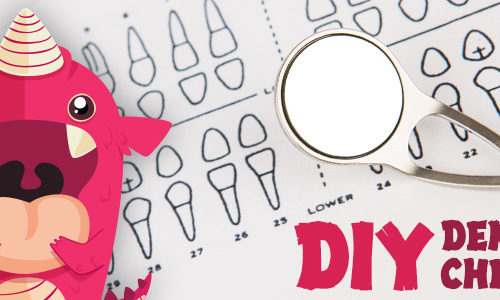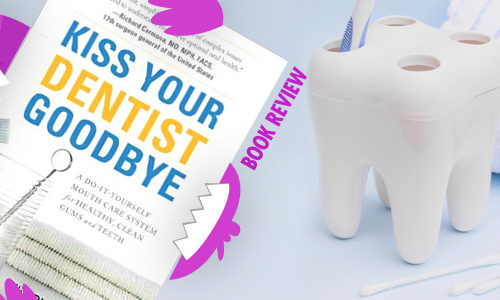-
Proximal Caries (Cavities Between Teeth) – Radiograph X-rays, Treatment, Restoration, Classification
Key Facts Proximal Caries are cavities that develop in the proximal surfaces of the teeth, which are the surfaces adjacent to each other These cavities often start as minor demineralization of the tooth enamel but can progress into larger cavities Proximal Caries are harder to detect in the early stages because they are hidden between teeth Dental X-rays are often the most effective way to detect them The primary cause is poor oral hygiene (especially infrequent flossing), but diet and genetics can play a role Early detection and treatment are key to preventing extensive tooth damage What are Cavities between Teeth? Cavities, or dental caries, are permanently damaged areas on…
-
Dental fillings (tooth fillings) – Cost, Procedure, Types, Kit, Fell Out, At Home
Key Facts Dental fillings are used to restore the integrity and function of teeth damaged by cavities or decay Fillings can be made from various materials such as amalgam, composite resins, porcelain, or gold The procedure involves removing the decayed part of the tooth and then filling the cavity with a suitable material The durability of dental fillings varies depending on the material used Regular dental check-ups and good oral hygiene practices are essential for the longevity of dental fillings What are Dental Fillings? Dental fillings are a common dental procedure used to restore teeth that have been damaged by decay or cavities. When a tooth is affected by decay,…
-
Dental Sealants for Kids and Adults – Cost, Controversy, Meaning
Key Facts Dental sealants are thin protective coatings applied to the chewing surfaces of the back teeth They help prevent cavities by sealing off grooves and depressions where leftover food particles and bacteria can accumulate Dental sealants are mainly used in children but can also benefit adults Sealants are made from a plastic resin material that bonds to the tooth The procedure for applying a dental sealant is simple, painless, and non-invasive Dental sealant can last up to 10 years with proper care What are Dental Sealants? Dental sealants are a thin, protective coating that adheres to the chewing surface of your back teeth. They are often applied to the…
-
Hydroxyapatite Vs. Fluoride: Differences, Which is Better, How They Compare
Key Facts Both hydroxyapatite and fluoride are substances used in toothpastes to protect and repair teeth. Fluoride works by strengthening tooth enamel and making it more resistant to acid erosion and decay. Hydroxyapatite contributes to the remineralization of tooth enamel, promoting repair and protection. Hydroxyapatite is the main mineral component of tooth enamel, while fluoride is not naturally occurring in teeth. Both hydroxyapatite and fluoride toothpastes have been shown to be effective in preventing dental caries (cavities). How Does Fluoride Toothpaste Work? Fluoride in toothpaste works to protect teeth in two key ways. First, it slows down the process of demineralization – the dissolution of tooth enamel caused by acids…
-
How to Make Dental Fillings Last Longer?
Some parts of this article are taken directly from our Tooth Decay Masterclass. Dental fillings are used to fill a tooth after a cavity (tooth decay) has been removed. Every filling has its estimated lifespan, but you can affect this in many ways (mostly by shortening it), and this is why in this article we will comprehensively describe all the important aspects of fillings durability and lifespan. 1. Types of fillings These days there are three most common types of dental fillings or restorations, each having a different estimated lifespan: Composite resins (so-called white fillings), longevity studies: [1], [2] – they are made from mix of acrylic and ceramic resins…
-
Acid Reflux (GERD, LPR) Teeth Problems – Enamel Erosion
Disclaimer: please note that this article is mostly focused on GERD/LPR related dental problems and provides only basic advice regarding treating acid reflux itself. Be aware that GERD/LPR may be a serious condition leading to life-threatening diseases like Barett's Esophagus or even esophageal cancer. It should be diagnosed and treated by a physician, not self-diagnosis on the Internet. There are two main types of acid reflux disease: (1) typical acid reflux called GERD (Gastroesophageal reflux disease) or GORD (Gastro-oesophageal reflux disease) and (2) LPR (Laryngopharyngeal Reflux). The first one is easy to diagnose as it causes chest pain often referred to as heartburn. It can appear right after eating spicy…
-
DIY Dental Checkups – Self-Checking and Diagnosing Teeth for Cavities
Caution! This article is for dental nerds or people who would love to see and know more than a regular patient. Please be aware that self-checking your teeth does not substitute checkups performed by a dentist and it should not prolong intervals between seeing your dentist. If anything, it should make you visit your dentist sooner if you notice any spots that bother you! In this article you will learn the following skills: Professional naming of teeth and their surfaces What is the purpose of checking your teeth What tools do you need for self-checking your teeth How to perform proper self-checkup What to look for and if dark spots…
-
Cavities and Tooth Decay – Heal, Reverse Naturally, Fix and Prevent
Cavities and tooth decay is the no. 1 topic so we have decided to write a detailed article with Q&A section answering every question you have ever asked us! We are also planning to release the whole book on this subject so please check back soon in a couple of weeks! This article is on how to heal tooth decay (reverse cavities) naturally, that is without drilling. It does NOT mean that you shouldn't consult the case with your dentist. Having bitewing x-rays and the opinion of your dentist is priceless information about your chances for success! So please keep in mind that it's the dentist who is making calls…
-
Tooth Decay – Prevention, Treatment, Questions and Answers
There are many questions you ask about tooth decay and cavities in general. This is why we are preparing this article focused on all these matters. As it is currently still a work in progress we encourage you to check back soon in couple of weeks! Supplements for tooth decay There is no specific supplement that can treat or prevent tooth decay. However, there are certain vitamins and minerals that are essential for maintaining healthy teeth and gums. These include calcium, vitamin D, and fluoride. Calcium is the main component of teeth and is important for maintaining strong, healthy teeth. Vitamin D helps the body absorb calcium and is also…
-
Is chocolate really good for your teeth?
There were some articles and studies saying that chocolate may be beneficial for your teeth. Let’s debunk this in this upcoming article! Bittersweet chocolate and teeth ADA Eating bittersweet chocolate can have both positive and negative effects on your teeth. On the one hand, chocolate is a source of calcium, which is essential for strong teeth and bones. Chocolate also contains antioxidants, which can help to protect your teeth and gums from damage. On the other hand, chocolate is high in sugar, which can promote tooth decay. In addition, some types of chocolate, particularly dark chocolate, contain tannins that can stain your teeth. Chocolate teeth – is chocolate good for…






